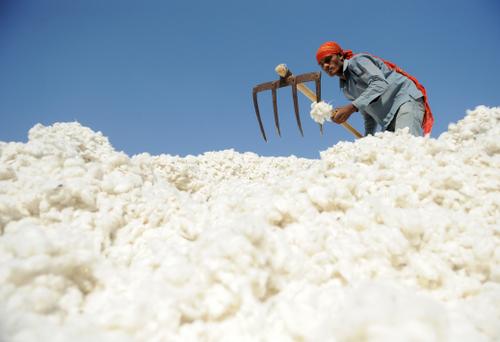Why do Indian exporters hate the rupee?
This December 16, 2011 file photograph shows an Indian worker as he sorts cotton, one of India’s principal exports.
Even as India's moves to shore up the rupee threaten to increase inflation and simultaneously stymie growth, exporters say that the cheaper currency won't do much to improve the trade deficit.
Which is one reason why India's currency problems may be more serious than those facing other Asian countries.
India's Mint newspaper writes:
In the normal course, a depreciating rupee should have made Indian exports cheaper and more competitive. But instead of celebrating the windfall from a 23% drop in the value of the rupee against the dollar in the last one year, the board of the main exporters’ lobby was busy over the weekend in Goa, charting a plan to deal with the volatile currency.
What's the deal?
Because of a combination of shrinking global markets and rising import content of Indian exports, a weakening rupee does not necessarily translate into enhanced exports. Worse, because imports are largely inelastic, with oil and gold accounting for 44% of India’s purchases from overseas, declining exports can only mean that the trade deficit would widen, putting further pressure on the balance of payments.
India's main exports don't help matters, either, because a lot of the raw materials have to be imported.
While sectors such as engineering, chemicals, and gems and jewellery have been the key drivers of India’s exports, due to a high import content in such products, the depreciation of the rupee does not fully translate into gains for exporters.
The article you just read is free because dedicated readers and listeners like you chose to support our nonprofit newsroom. Our team works tirelessly to ensure you hear the latest in international, human-centered reporting every weekday. But our work would not be possible without you. We need your help.
Make a gift today to help us reach our $25,000 goal and keep The World going strong. Every gift will get us one step closer.
